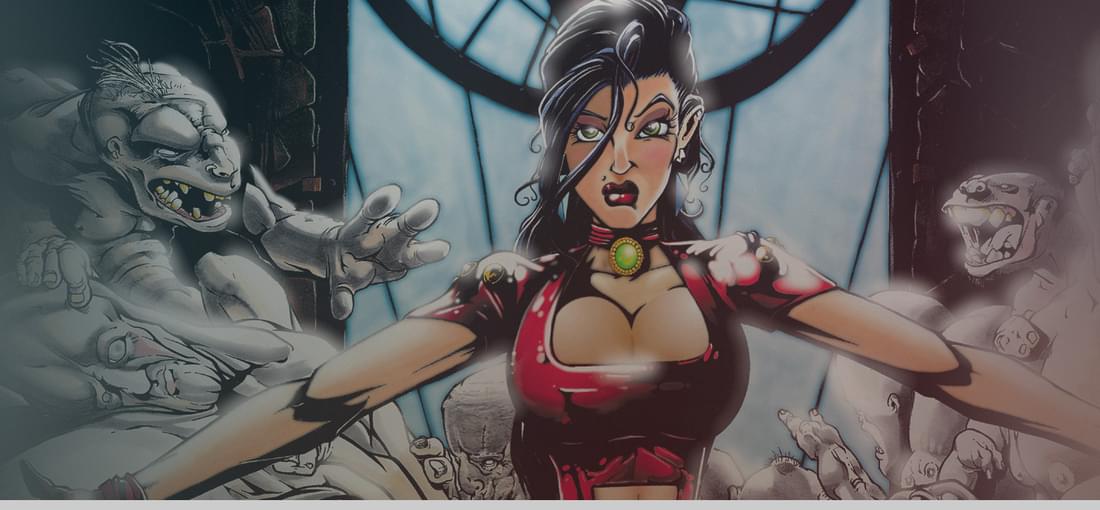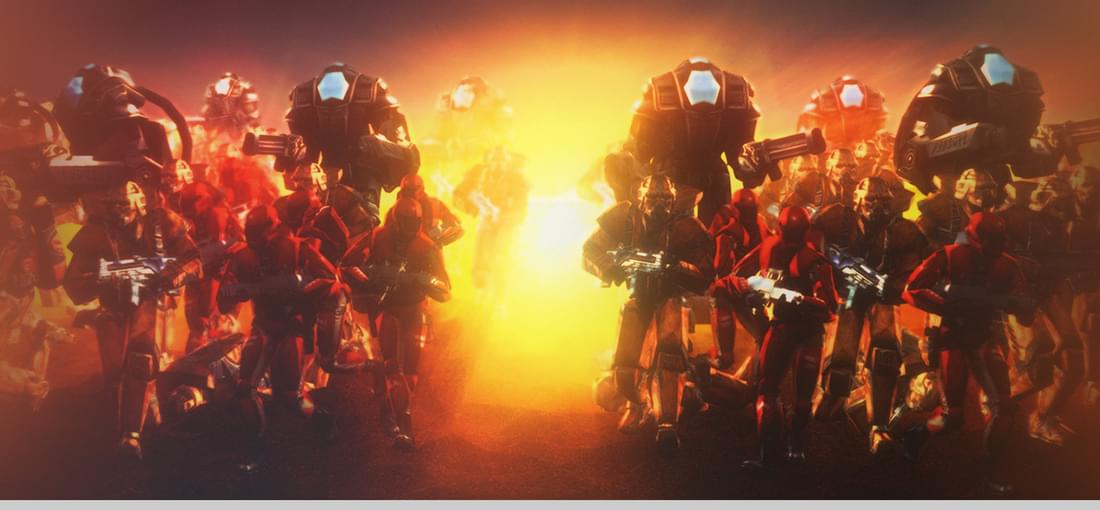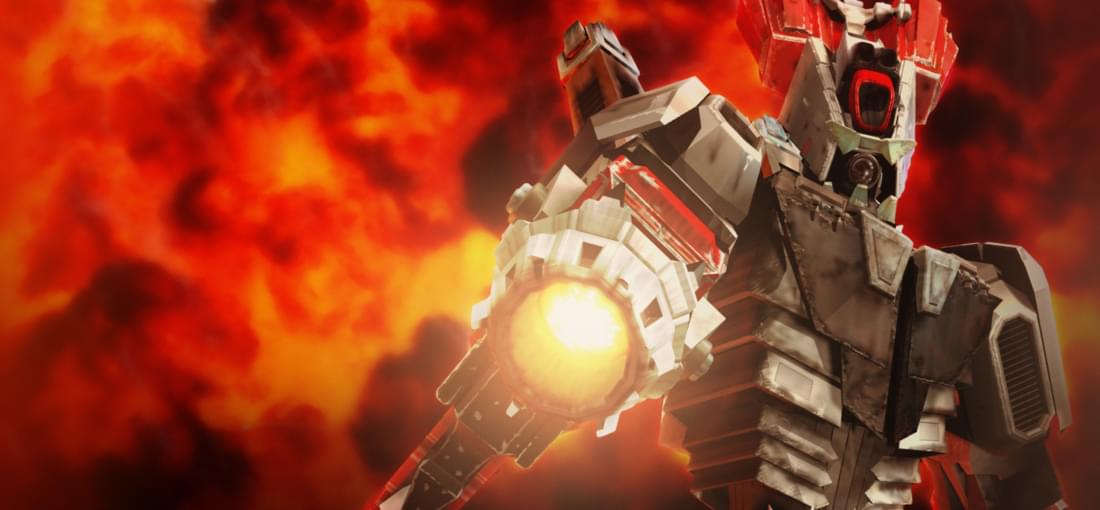


Sin is a good example of a yee-haw shooter. It wants you to have fun. The pacing, the weapons, the look and sound of it all give you this over-the-top action vibe that is just great. As for what it brings that is unique to the FPS genre, this game had a very cool idea: creating levels that were not just large and action-packed, but allowed for variation in the structure of the game. For example, you can take wholly alternative levels through the game based on things you do in particular levels. Destroy a device and the next level will be flooded with lava. Figure out a password and you'll find out you have to head for a military base under attack. The one thing I am not a fan of from the game was the late-game sections that start including monsters versus the firefights you got before. A game with a similar tonal shift would be the first Far Cry, if you're familiar with it. This and Half-Life were two major FPS releases of 1998. They both tried novel ideas, but while Half-Life got deserved praise, Sin was held back by the initially unpatched release, with its long load times (the topic of the first Penny Arcade comic ever published online, by the way) and general bugginess. The issues were eventually fixed, but not before it had been largely dismissed in favor of Half-Life. Give it a try this time around - this is one of the better FPS releases from GOG.

First off, I'm going to make it clear this is about the game's single player; apparently some people love its multiplayer, and if you want to hear about that you won't here. Moving along. I recently picked Chaser off of Steam a few weeks ago. It's clearly a budget shooter, and I thought it'd be a nice cheap fix for someone looking for a new game to play. And I'd heard it was a long game, all the better, right? Not....exactly. The game is extremely bland. There are bad guys with guns: some wear fancy red armor, others black trenchcoats or suits, some gang members, some Russians, but they're all the same enemy. Every single one will behave the same. And what is this "behavior"? The game commits a cardinal sin of blatantly spawning enemies immediately around corners, or in that room you just cleared, or basically anywhere you are. Don't be surprised when you see enemies frequently pop into existence hugging a corner; it's the game's style to "surprise" you in such a fashion. What about the mechanics? Well, there's nothing too special here; again, the common theme is blaaaand. You run and shoot, nothing special but nothing to complain about...except that the game is very bad about giving you feedback. You'll barely be aware that you're being shot at, other than the ridiculous speed with which health and armor erode. There is very little indication you're under attack, and the sounds associated with firefights are somewhere between muted/lackluster and nonexistent. Gameplay frequently consists of hunting for enemies that are persistently peppering you with fire from rooftops, hills, balconies, and rooms you just walked through. If you aren't a fan of regenerating health mechanisms, rejoice! For you won't find any of that here. However, this game leans towards being a good example of why developers have moved towards such mechanics, because as I said before, your health/armor wear away quickly in the smallest encounters, enemies are almost always present due to the game's dedication to using you as a bad-guy respawn point, and the game itself lets you get shot at without raising much of a fuss. I certainly didn't want regenerating health, but this game swerves too far into save/reload territory for my tastes. If you've read this far, allow me to do you one favor: there's a gameplay mechanic that is not touched on in the in-game tutorial, and it is incredibly useful. You can slow down time! Of course, you slow down a ton, too, so its usefulness is mixed, but it will help you deal with those hairier moments more easily. Search your control configuration to find it. Finally, there is the setting and story. They are, regrettably, bland. There's some vaguely interesting stuff about some much-flashed-back-to attack on your person, but it's all drowned out in how unforgivingly the game drags you through the smallest minutia of your journey. Most levels are less about moving anything forward, and more about just continuing whatever leg of the journey you have to make, only now with slightly different surroundings. One of the lower points of the game is exactly this, when you've just helped some guys navigate some enemy check points, and then you make a rather boring "thrilling" escape via jetpack into water, at which point you are forced into some kind of half-assed submarine simulation fighting large numbers of drones while navigating a maze-of-a-shipwreck where everything is tinted the same color. Apparently this was your plan, and rather than just letting us join back up with our allies, or go through some more interesting escape, you trudge through this. Or you go through the fifth chunk of Russian mountains. Or another industrial wreck of a city. Ad infinitum. In short, yes, the game is long, and yes, it is a shooter. But it makes neither of those concepts a joy to behold. Or even that enjoyable. There are far, far better games on GOG that aren't this awful game.

Total Annihilation is a game that bucked a lot of trends in the RTS genre, and came away far far better for doing it. Let's break it down: The soundtrack is an excellent place to start, as it will be among the first parts of the game you experience. Simply put, this is some of Jeremy Soule's finest work. Search around for the game's intro on the streaming video site of your choice, and enjoy. Even better, the soundtrack is used dynamically in-game, switching to more energetic tracks when battles swing into high gear and mellowing when things are calm. But how about gameplay mechanics? This is among the first games that found the older "resources and the peons/workers/units that harvest them" mechanic tiresome. You do not build drones or engineers and sic them on a pile of slowly decreasing resources. Instead, you set up structures that gather or produce resources at certain rates. The idea is that the structure will not run out of the resource, it just collects it at a certain speed. For people who have only ever sent harvesters out to collect, this might seem dangerously unbalanced, but I assure you it isn't. You might have infinite resources to collect, but you're gathering them at a slow, automatic rate. There's also a number of ways to gather resources. For energy, you can build solar collectors, or if water is available, tidal generators, or fusion plants can be built. For metal, there are different sized mining structures, and an interesting set of buildings that make metal from extremely large amounts of energy. And of course you can scavenge both from the battlefield, if things are especially tight. For unit behaviors, you have several options readily available in the hud, dictating how aggressive or indifferent to enemies they are, allowing you to avoid the issue of a patrol that foolishly chases an enemy all the way back to their base. Also, when units fire and attack, they use different arcs and trajectories for their shots. Some units fire in high arcs, able to go over hills and obstacles, while others fire in straight lines. Nearly every unit can miss when it fires, as well, which adds a welcome bit of realism. In addition, there's often a real sense of scope to unit ranges. This isn't a game that has artillery that fires a third of the way across your screen; you'll be firing that stuff across the map. There are a number of different maps available: worlds made entirely of metal, or fully submerged water worlds. Island maps or dense jungles. Fights among toxic explosive plants. All different maps, and many requiring a fully different set of tactics and units. Bringing me to perhaps the biggest positive, the units themselves. Speaking plainly, there's a crap load. The Core Contingency expansion adds even more. Fully fleshed out navies (not just one or two ship types), a host of infantry mechs and vehicles, radar jammers, amphibious units ("are those tanks coming out of the water?!), aircraft, hovercraft, and a collection of advanced structures that really add flavor. And the developers, in a very unique idea that I have yet to see replicated in modern games, made it relatively easy to add custom units made by users freely to the game. While some games were allowing the creation of maps, this game did that and more. Users can create their own models and behaviors for units and add them into the game. Search around, and you will find enormous quantities of units and packs of units if you're a fan of customizing your game. To be fair, if the game had a weak spot, it would be story. The story is fairly simple, and acts mostly as an excuse to blow things to bits. You won't be seeing a cutscene every mission. Briefings are simply delivered, with a small bit of flavor text, an objective, a little narration, and then you go. There are no hero units (other than your nameless Commander unit) to rally around. I usually miss heavy story elements in games, but this game delivers heavily enough on the gameplay side of things you'll be hard-pressed to notice. In the end, this is a great example of what the RTS genre needed, rather than pumping out clones of other games with slightly different skins.

This game takes several notes from X-COM. Turn-based fans, however, should consider carefully based on the gameplay, rather than just the setting. First, some things that were done very well: The graphics are well done. It's not the prettiest game in the world, but everything is pretty clear, well presented, and fits well with the games themes of conspiracies and alien mysteries. There's plenty of equipment to use, though many of the "standard" human weapons (assault rifles and such) are a bit the same. Some are clearly better, but there's also many that don't stand out from each other. The alien weapons are more distinctive, though. The setting is rather intriguing: you start as a lone soldier amidst a ruined world, teaming up with others and eventually forming a force to fight back the alien encroachment that seems to be in the works. Nobody really knows what happened exactly, and its your job to figure out. There are several set-piece missions that will come up gradually, allowing you to find details of what went wrong and what's going on. The game is also split up into a strategic and a tactical portion (sound familiar?), with you controlling a number of bases and resources, trying to get a handle on the world while also having the opportunity to lead your squads in action. But then there's the things that I, personally, didn't like. Be your own judge: First, the game is not turn-based in the tactical portion like X-COM and Jagged Alliance. I knew this going in, but still found it a bit distasteful. You have the option (and you'll need it) of pausing the action at any time and changing your soldiers' orders. Otherwise, there's no grid-based, turn-based action to be found. Hope you got this far into the review if you were counting on it. Secondly, I found the game's AI extremely disappointing. Your soldiers do not have ANY. Anything they do has to be ordered by you. Movement, firing, using equipment, the whole thing. Now, I wouldn't mind this except the game is in real-time. Which means I'm pausing quite a bit since your soldiers can't even so much as switch to a second, in-range target after a first one goes down. And your enemies don't have very impressive AI. The game has a fairly dumb approach, basically rushing your men as soon as they are spotted, constantly moving forward and shooting. If an alien happens to run out of ammo, it will just continue moving forward, with no change to its pattern. The game compensates by making the aliens extremely cheap in their attacks. Expect a constant rain of grenades, mortar fire, and rockets as the game compensates for bad AI with sheer firepower. Finally, the base management in this game was simplified a bit from what an X-COM fan might expect. Rather than being able to build your own bases anywhere, with certain layouts, facilities, etc, you occasionally come across bases that you can seize control of and use. As for controlling them, you can choose which kind of base you want it to be (for example, research or military deployment), and that is the extent of your choices there. While I did beat the game, and I found it interesting at first, enough so to go to the end, I wouldn't try it again. Realize that this review is being written from a fairly big X-COM and TBS fan, so take it with a grain of salt as necessary. But if you can live without the TBS in your X-COM-like action, then this game might be a good match for you. Also, if your really not into turn-based action, this might be the alien-fighting game just for you.